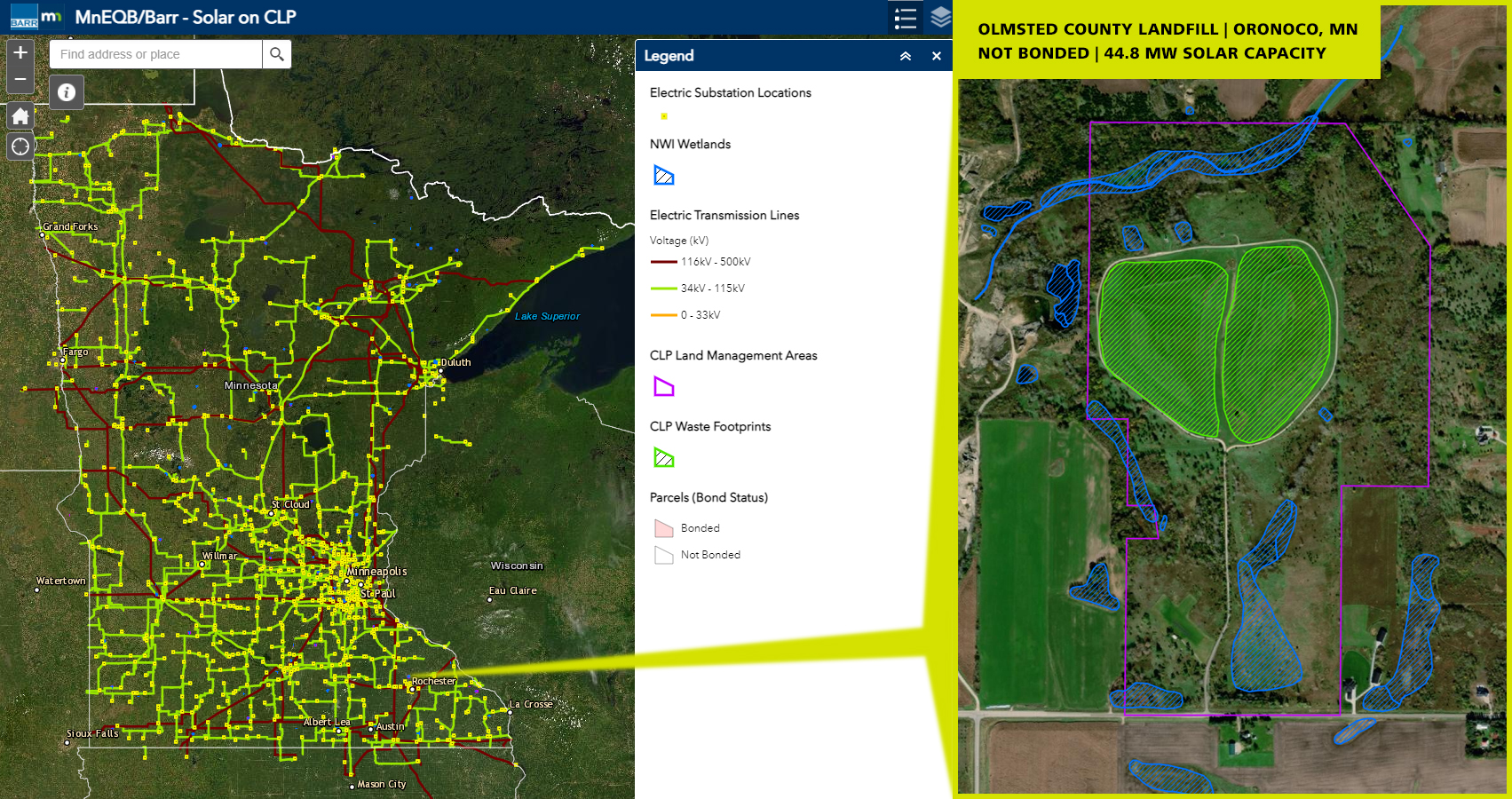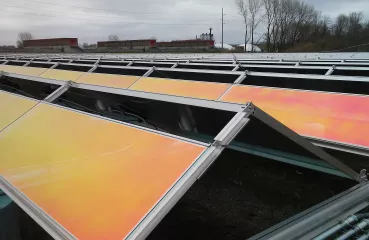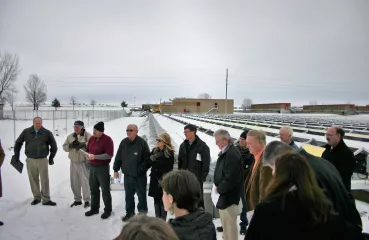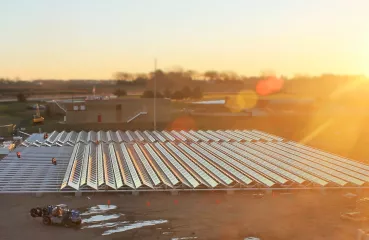Solar potential: There is significant technical potential for solar development on Minnesota’s CLP sites. The technical assessment estimated that there is potential to generate 950 megawatts AC (MW) using solar on 4,500 acres in the CLP, or enough to power over 100,000 homes.
Barriers: Several barriers limit solar development on CLP sites.
- The current statutory mission of the CLP is limited to taking environmental response actions and protecting human health and the environment. Establishing beneficial property reuse was not included and funded in the original CLP program mission.
- Fifty-five CLP sites have use restrictions because of past general obligation bond financing of cleanup actions. The prospects for beneficial reuse, including solar development, are limited for property where bond financing was used until the bonds are retired.
- Solar development could be more costly and complex on closed landfills than on greenfield (uncontaminated) sites. Solar developers face uncertainty about site-specific suitability for solar, increased costs associated with construction on the landfill cap, as well as real and perceived risks associated with CLP responsibilities.
- State regulations impose limitations on solar projects under some solar ownership, operation, and program models. For example, new Community Solar Garden projects are limited to 1 MW, which is well below the estimated solar energy generation capacity of many CLP sites. Legislative action would be required to raise this limit at brownfield locations such as CLP sites.






